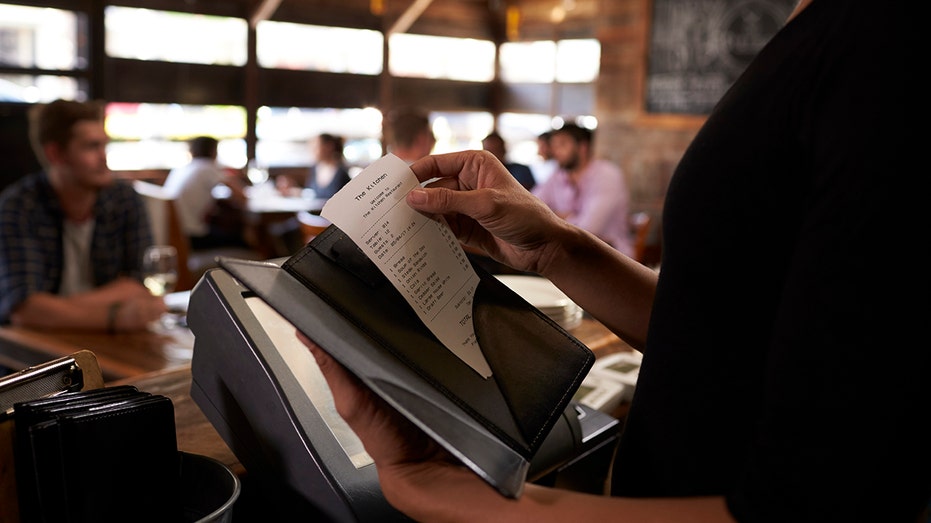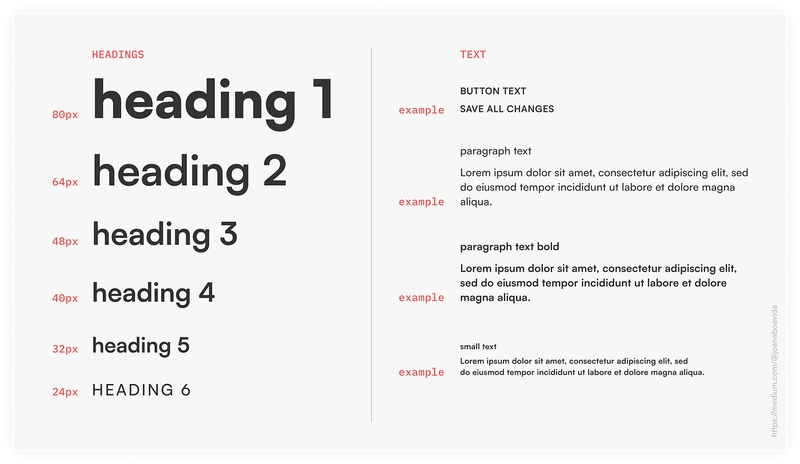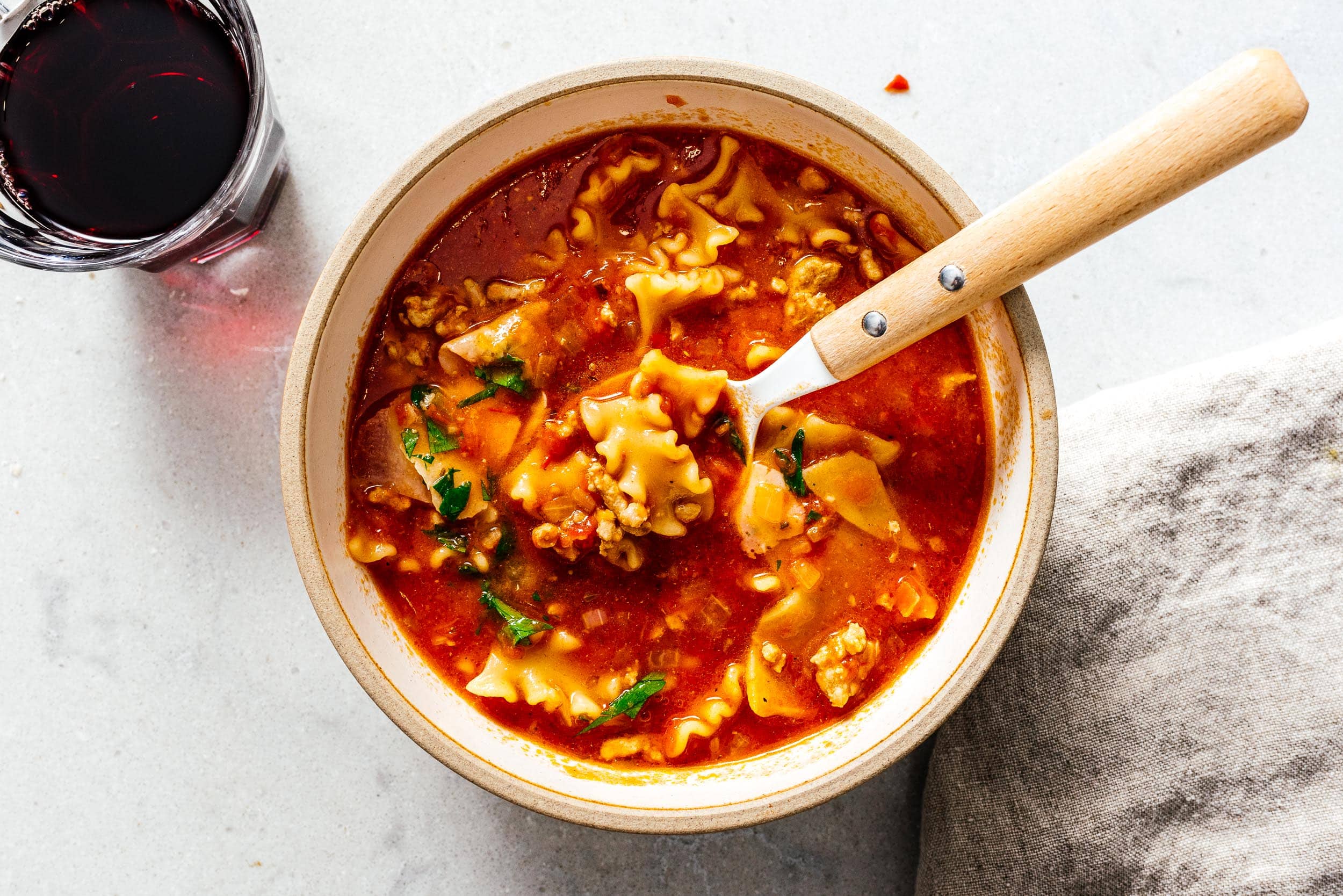A Classic Taiwanese Pork Braise, Reimagined for the Instant Pot
Lu rou fan—braised minced pork belly over rice—is a comforting and deeply flavorful Taiwanese classic. Traditionally, lu rou fan requires hours of simmering; this recipe from bestselling cookbook author Clarissa Wei reimagines it for a pressure cooker, making it possible to have dinner ready in half the time.


I did not understand the value and appeal of a pressure cooker until I became a mother. Time has become especially precious, and I find myself frantically rushing around during my son’s brief naps to meal-prep as much as I can. Stressed and short on time, I’ve quickly adapted all my go-to recipes—such as beef noodle soup and congee—for the Instant Pot, so they can be made as quickly as possible. One of the first recipes I adapted for the pressure cooker was lu rou fan (Taiwanese braised minced pork belly), a comforting and deeply flavorful dish that has long been a fixture in my kitchen.
The first iteration of this recipe is in my cookbook Made in Taiwan: Recipes and Stories From the Island Nation. I learned to make the dish from Lin Tai-Yu, the third-generation owner of Lin Family Braised Pork Over Rice in the Taiwanese city of Tainan. Lin, who goes by Gloj, spends his days slowly simmering hand-diced pork in a sweet and savory concoction of soy sauce, fried shallots, garlic, rice wine, and sugar. For the silkiest sauce, he recommends using the fattiest slab of pork belly you can find, dicing it finely, and slowly simmering it over the stove for hours.
Before I had my son, I took his advice to heart. I made time to dice pork belly into perfect, tiny squares, render out the fat in a wok, and pour in the soy sauce and aromatics. I’d then simmer it all with the lid slightly ajar and let the sauce slowly reduce over several hours until it became thick, treacly, and perfectly balanced between savory and sweet. That approach meant I could control the rate of evaporation, and ensured the flavors of the dish could concentrate slowly and steadily without losing too much moisture too quickly. Since my son’s arrival, though, I’ve had to bid farewell to the days of idly tending to a wok—which is where the Instant Pot comes in.
The biggest benefit of using an Instant Pot is that it’s hands-off and shaves off hours of cooking time. There’s no need to hover over the stove, stirring and adjusting to make sure the pork doesn’t stick or burn. Once you’ve used the sauté function to sear the pork and bloom the aromatics, you can seal the cooker and rest assured that dinner will be ready in a little over an hour. And while it cooks, you can prepare your rice and any side dishes you’d like to serve the pork with. Here’s how to make it.
Adapting a Taiwanese Classic for the Pressure Cooker
There’s a reason why seasoned vendors—those who have spent decades perfecting their craft—swear by the slow simmer of a stovetop braise. The pressure cooker, while efficient, changes the alchemy of the dish because there is no constant evaporation and the flavors develop on a much speedier timeline. The sauce doesn’t get as thick, and while the aromatics are briefly bloomed at the start, they don’t continue to caramelize and deepen in flavor the way they would over a low, open flame.
With the stovetop version, I’m also able to taste and adjust as I go along. With a pressure cooker, there’s not much (if any) room to improvise on the fly. That said, if you keep the following tips in mind, you’ll be able to make a braise that’s practically as good as the stovetop version. Just remember that pressure cookers can vary, so you may need to reduce the sauce a bit more and season to taste at the end.
The Size of the Pork Matters
Dicing pork belly into small, uniform pieces allows the meat to cook evenly and maximizes the meat’s surface area, allowing it to absorb as much of the sauce as possible. As the meat cooks, the fat renders, giving the braise a soft, supple texture. Unevenly cut pork won’t break down as evenly, resulting in a chunkier sauce that isn’t as velvety.
A sharp knife is essential for cutting the pork well. For ease, I like to freeze the pork belly for about an hour so it firms up but remains pliable, making it much easier to dice. If you live near a friendly butcher like I do, however, they might be happy to dice the meat for you and vacuum seal it in your preferred portion sizes. Keep bags of diced pork belly in your freezer at all times, and you’ll be able to make lu rou fan whenever you want.
Getting the Braising Sauce Right
The braising liquid is just as important as the pork in this dish. Sugar and soy sauce are the main ingredients, and though soy paste—a thick Taiwanese soy sauce that has a hit of licorice—is traditional, I prefer oyster sauce for its brininess. Rice wine brings depth and a hint of sweetness, and a generous half cup of fried shallots provides rich savory notes with a hint of caramel.
Since everything is cooked in a pressure cooker, you'll need less liquid than a stovetop braise that reduces slowly over several hours. You want just enough liquid to fully cover the pork so that it cooks thoroughly.
The pressure cooker takes on the heavy lifting, effortlessly combining the rendered fat, succulent pork belly, and aromatic braising liquid into a harmonious dish. This Instant Pot version may not be the most traditional way to make this dish, but it’s just as delicious—and ready in half the time.
In an electric multicooker (such as an Instant Pot) set to the sauté function, cook pork belly, stirring often, until opaque and some of its fat has rendered, about 5 minutes. Add the garlic and cook, stirring to combine, until fragrant, about 1 minute.
Add water, fried shallots, soy sauce, sugar, oyster sauce, and rice wine. Seal cooker, bring to high pressure, and cook for 40 minutes. When done, let cooker depressurize naturally, 30 to 45 minutes.
Open the cooker and mix well. If you’d like the braising liquid to be thicker, set pressure cooker to sauté function and simmer sauce until it’s thick, treacly, and slightly reduced, about 15 minutes. Serve over cooked white rice.
Special Equipment
Electric multi-cooker, such as an Instant Pot
Notes
I’ve tested this recipe dozens of times, both on the stovetop and in a pressure cooker, and found that the ideal soy sauce-to-water ratio varies depending on the brand of soy sauce used and how salty you like your food. For convenience, I typically reach for Kikkoman, but if you're using a low-sodium soy sauce or one with added sugar, you’ll need to season to taste at the end. This dish is more of an art than an exact science, so don’t be afraid to tweak things.
Make-Ahead and Storage
Leftover lu rou fan stores beautifully in the fridge or freezer. Refrigerate in an airtight container for up to 3 days or freeze for up to 3 months. Freeze in individual portions and thaw in the refrigerator. To reheat, bring to a simmer over medium heat or microwave until warmed through.










































































